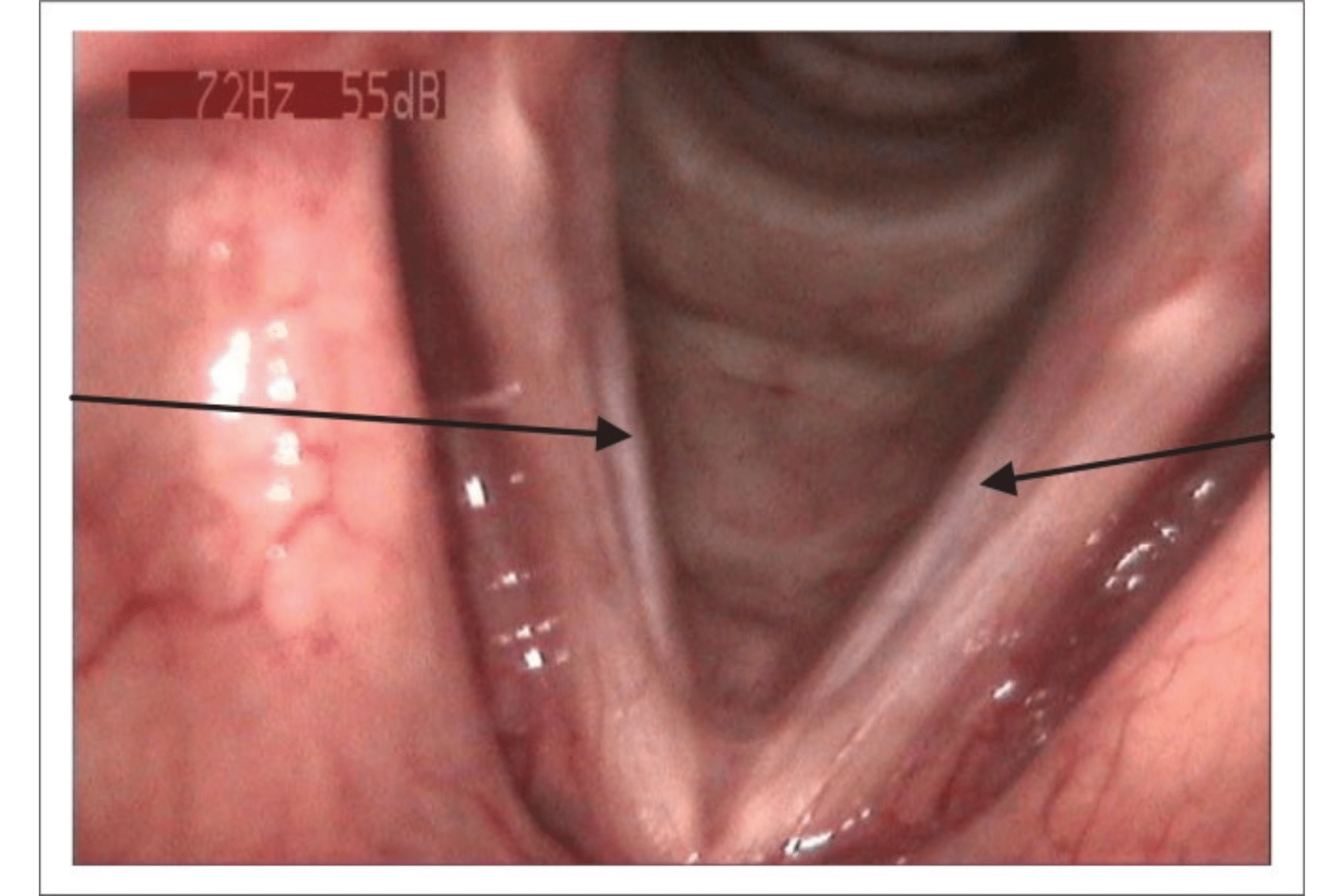Voice Therapy for Sulcus Vocalis in Melbourne and Online
Sulcus vocalis is a rare condition that effects the structure of the voice muscle. Learn about voice therapy at Voice Science to restore function.

The indent, called a sulcus, can vary in length and depth. In many cases, it causes the voice to vibrate irregularly, creating a hoarse quality.

If you were to trial therapy, a baseline assessment from an Ear Nose & Throat Specialist is essential, as well as a thorough acoustic voice assessment by a speech pathologist. Be sure to request information on acoustic changes (objective measures of your voice vibration) across a short course of treatment to monitor whether the therapy strategies have been effective for your voice. Also, it’s important to be diligent in practising voice therapy exercises outside of sessions. Voice therapy is not a quick fix, and consistent home practice is required to see if it is effective for you.
If you’re looking for a team of voice therapists with both expertise and experience, look no further than the speech pathologists at Voice Science. When you complete a Voice Assessment, one of our skilled clinicians meticulously transcribes your vocal health, hygiene and function, meaning that your one-on-one voice therapy program will be specific to you.
Sulcus Vocalis can be categorised into 3 core groups (Ford et al.):
- The sulcus appears on the surface of the voice (superficial type), and causes no vocal anomalies.
- The sulcus makes a deep furrow on the vocal fold, resulting in some dysphonia and voice quality anomalies.
- The sulcus appears in a pouch like form, causing severe voice quality impacts and dysphonia.
It’s also helpful to investigate any secondary conditions that impact the voice such as reflux. It’s recommended that voice therapy for sulcus vocalis includes Vocal Function Exercises and Resonant Voice therapy, with the aim of minimising the effort required to produce voice and optimise airstream coordination, in spite of physical factors causing misalignment (Kumar, 2016).


The most commonly used surgical procedure is called vocal fold medialisation, which aims to improve the positioning of the vocal folds to eliminate the gaps between them that can come from having a sulcus. In some cases, an injection into the vocal folds (intrafold injection) is also used.
In one single case study, a patient had 15 voice therapy sessions before any surgery and improvements were observed across various measures (acoustic, aerodynamic, perceptual and the patient’s own report), and the patient also reported improvement. (Rajasudhakar, 2016).
Considering we can’t see our own vocal folds, it’s impossible to know if we have sulcus vocalis without assessment by either an Ear Nose & Throat Specialist (ENT) or speech pathologist using specialised equipment. A helpful way to think about it is that an ENT usually gives the official diagnosis and a speech pathologist guides you through therapy. This partnership also means that whichever of the two you start, you’ll be referred to the other if necessary.
So let’s imagine you’ve noticed that your voice has a hoarse or breathy quality and have no other information yet. A voice assessment with a speech pathologist would be a good starting point. Take a look at our Voice Tone Test to get started. After submitting recordings for our clinicians to assess, you’ll then have a one-on-one session to find out whether we recommend therapy and/or a referral to an ENT to investigate further.
On the other hand, let’s say you’ve already seen an ENT, you have a diagnosis of sulcus vocalis, and you reach out to us for voice therapy. In this case, it’s important that you provide us with any assessment information from your ENT so we’re working as a team and know what their recommendations are. As well as that, our Voice Tone Test is still an important starting point so that our clinicians are introduced to your current vocal function and voice quality (which is often hard to fully gauge from written descriptions and diagnosis alone!).
Whichever way you come through, we’re here to guide you through the process. You can find out more about Voice Science’s voice therapy options here.
As an absolute first step, we recommend that you submit our Voice Therapy Query Form below and we’ll get back to you to guide you through the rest of the process!
- Ford CN, Inagi K, Khidr A, Bless DM, Gilchrist KW; . Sulcus vocalis: a rational approach to diagnosis and management. Ann Otol Rhinol Laryngol. 1996;105:189-200
- Kumar, Rawish & Sharma, Preeti & Vir, Dharam. (2016). Voice Therapy outcomes in Type-I Sulcus Vocalis: Case Studies. International Journal of Clinical & Experimental Otolaryngology. 42-44. 10.19070/2572-732X-160009.
- Rajasudhakar R. (2016). Effect of voice therapy in sulcus vocalis: A single case study. The South African journal of communication disorders = Die Suid-Afrikaanse tydskrif vir Kommunikasieafwykings, 63(1), e1–e5. doi:10.4102/sajcd.v63i1.146

